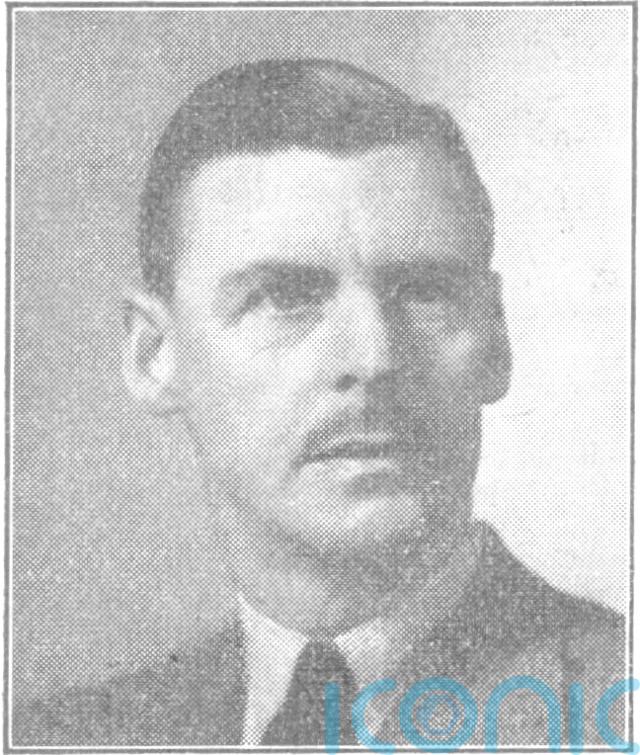
A police inspector involved in the search for the Stone of Destiny after its famous theft in 1950 ended up receiving a “hidden” piece of the artefact years later, research has revealed.
Detective Inspector William Kerr was one of those tasked with finding the ancient Stone of Scone following the audacious raid, in which a group of Scottish nationalist students removed it from Westminster Abbey.
As the authorities hunted for the sandstone block, Det Insp Kerr worked to uncover the conspiracy and identified one of those involved – only for the artefact to be handed back at Arbroath Abbey in April 1951.
Now, a research project has found that the Glasgow Police inspector, who went on to become chief constable of Dunbartonshire Constabulary, accepted a small piece of the stone as a gift some years later.

Professor Sally Foster of Stirling University has been working to trace the stories of more than 34 fragments of the stone created when it was repaired in secret by stonemason and nationalist sympathiser Bertie Gray.
Some of her research was published in an academic journal earlier this month, but Prof Foster is continuing to hear about new fragments as a result of people coming forward to share their stories.
The stone split in two as the students removed it from Westminster Abbey and Mr Gray was trusted with its repair.
Mr Gray’s work involved inserting metal rods into the stone to bring the two pieces together, a process which produced a number of fragments which he kept – carefully numbering and distributing many of them in secret.
Some pieces have been kept hidden as family heirlooms, being brought out for special occasions but rarely seen in public.
A note from Det Insp Kerr was uncovered by Prof Foster from a document kept at National Records Scotland.

Her research has led her to believe that Mr Gray may have given him the fragment at a dinner in 1956.
In the 1973 document, Det Insp Kerr says: “When I was formally presented with my ‘piece’ of the Coronation Stone by those who engineered and carried out its removal from the Abbey, I laughingly expressed scepticism about its genuineness as the repaired Stone was apparently intact.
“Gray then explained that in the process of ‘tunnelling’ for the rods, seven tiny pieces were removed and carefully retained to be presented to certain individuals, of whom I was one.”
Despite Mr Gray’s explanation to the police officer, Prof Foster believes there are far more than seven fragments that were distributed among supporters of the students and the wider Scottish independence movement.
None of the students involved in the raid was ever prosecuted, which may explain why Det Insp Kerr was confident to accept the gift.
Prof Foster said: “Detective Inspector Kerr was in charge of the Glasgow police investigation into the loss of the stone, liaising with Scotland Yard.
“Ultimately, he gets friendly with the students and their parents and Bertie Gray, and they all stay in touch.”
Prof Foster added: “He (Kerr) got given a fragment, and he accepted it.”
The most likely occasion for this gift would have been a dinner in 1956 in honour of Kerr and his wife – the point at which he became chief constable.
This event was attended by Mr Gray and the father of Alan Stuart, one of the students who took part in the Westminster Abbey raid.
Kerr’s missive from 1973 came as the Home Office sought to verify the authenticity of the stone, which was handed back at Arbroath Abbey.

Other fragments from the Stone of Destiny that were created during Mr Gray’s repair include an inch-sized piece that was gifted to Alex Salmond by Sir Neil MacCormick and kept at SNP headquarters.
Prof Foster believes Mr Gray carefully numbered 34 pieces of the sandstone block and distributed them with letters of authenticity.
However, there are likely even more fragments in private collections, as an unknown quantity of unnumbered pieces are also known to have been passed on in secret.
Prof Foster says she is still keen to hear from people who may have knowledge of the fragments’ whereabouts.
Subscribe or register today to discover more from DonegalLive.ie
Buy the e-paper of the Donegal Democrat, Donegal People's Press, Donegal Post and Inish Times here for instant access to Donegal's premier news titles.
Keep up with the latest news from Donegal with our daily newsletter featuring the most important stories of the day delivered to your inbox every evening at 5pm.